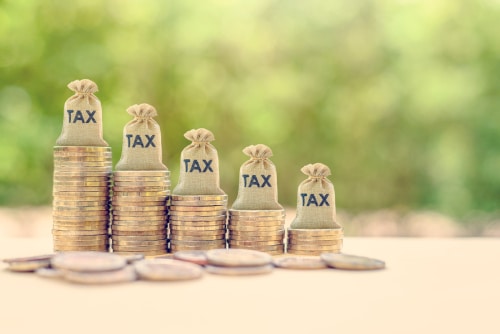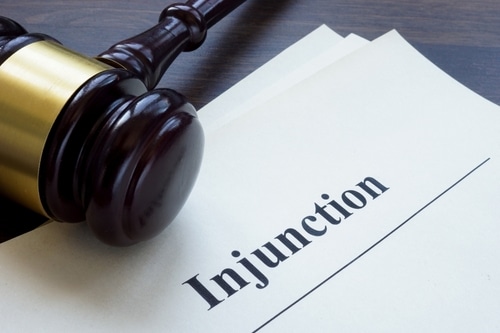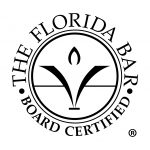Estate Tax Planning for 2025:
SUNSET OF HIGHER ESTATE TAX EXEMPTIONS.
The current estate tax law allows for each individual in 2025 to pass approximately $14 Million to their heirs, free of the Federal Estate tax. A married couple can get two such tax free amounts, one for each spouse. Thus during 2025 a married couple could pass along tax free approximately $28 Million total.
However, planning is needed to actually get both tax free amounts. There is a choice of two different strategies that can allow a married couple to receive two tax free amounts: #1 Portability Trusts, #2 Credit Shelter Trusts. Both of these strategies are explicitly allowed in the Internal Revenue Code passed by Congress. So these strategies are not “aggressive,” and are available to married taxpayers as a “matter of right.”
The higher tax free amount of $14 Million has been in the tax code since 2017, yet is due to “sunset,” that is to expire, at the end of the year (the year 2025). Upon expiration of the increased amount, if Congress does not pass a reinstatement of the increased amounts then the tax free amount will go back to the lower amounts prior to 2017.
However, the lower amounts that could be passed tax free prior to 2017 are subject to “COLA” adjustments. If Congress does NOT act, the amount that can be passed tax free in 2026 is estimated to be $7 Million to $7.25 Million. The reason for some uncertainty in the amount is that there is some uncertainty as to how the IRS is going to compute the COLA (cost of living adjustments).
DON’T PANIC AT THE “SUNSET” OF THE HIGHER ESTATE TAX EXEMPTIONS!
Clients should not panic of the Estate Tax “sunset” of higher estate tax exemptions scheduled at the end of 2025. Good estate planning is flexible estate planning. The ability to get two $14 Million tax free amounts has ALWAYS been subject to the whim of Congress to suddenly change their mind (and change the IRS tax laws).
Ever since the Congress in 1981 converted to the Credit Shelter system for estate taxes, there has been no permanent instance of the tax free amount decreasing. In fact, it has gone up steadily: from $60,000 pre 1981, to $600,000 in 1987, to the current amount of $14 Million. There was one instance of a temporary decline in the tax free amount. In 2010-2011 the tax free amount was drastically reduced; however, Congress retroactively re-instated the previous higher amounts.
Even though in the past there has bee no real instances of permanent declines in the tax free amount, there isn’t any guarantee that Congress won’t do so. Accordingly, good estate tax planning should always take into account that the amount available to pass tax free could decrease at a future date. Estate plans need to be resilient to such changes in the tax laws.
While there is no cause for alarm or panic, some clients may want to examine carefully methods of using the tax free amount during 2025 —- before the “sunset.” While clients should not do so with an attitude of alarm, the usage of the higher tax free amounts available in 2025 may be advantageous for some clients.
The “big, beautiful, bill” not only includes preventing the “sunset,” it also makes these provisions permanent. These larger estate tax exemptions does not seem likely to be removed from the bill. However, as of today’s date it is not certain that the bill will pass.
LOOK FOR 2025 TO BE A TUMULTUOUS ENVIRONMENT FOR ESTATE PLANNING.
Look for an evolving situation in estate tax planning, especially towards the end of 2025. In the past, Congress has often waited until the last minute to remedy expiring tax provisions. Clients should make their estate plans flexible to consider the possible result if the tax free amount suddenly changes.
INFLATION IS A WILD CARD!
Will inflation go down? Up? How might different inflation in 2025 impact your estate planning? See the side bar for some thoughts and arguments about the direction of inflation.
How does inflationary expectations impact estate planning?
Inflation impacts estate tax planning in many ways, here are just some examples:
a. Inflation can inflate a client’s assets beyond the tax free amounts discussed above,
b. Some advanced estate planning strategies, such as charitable trusts and GRATs are required to use IRS tables of interest rates. Higher interest rates, as a result of an inflationary environment, results in changes in IRS tables of the interest rates used for the tax strategies.
c. Inflation can result in higher COLAs applied by the IRS to tax free amounts, and the amounts that can be gifted annually to each beneficiary (and not counted towards your tax free amount, in 2025 the gift tax annual exclusion is $18.000 per donee).
CONCLUSION.
….. the challenging estate tax environment for 2025 gives clients and advisors alike a lot to think about.
What are your thoughts? Do you want to take action to update your estate plan, or do you want to wait and see what Congress will do about the “sunset” of the higher estate tax free amounts?
Contact us, if you want more information about estate planning, estate taxes, or estate tax savings strategies.
THE OUTLOOK FOR INFLATION
Given that the prior administration and Congress presided over substantial inflation, some may think that new administration policies may result in lower inflation. Somewhat lower inflation is possible, but NOT guaranteed:
LOWER INFLATION argument:
a. Increase in energy resources for the economy, resulting in lower energy costs,
b. With a crackdown on immigration, it is possible that price pressures abate on consumer staples (only).
c. Due to a prolonged period of Federal Reserve induced increases in interest rates, there is the possibility that the economy goes into recession, resulting in much lower inflationary numbers.
HIGHER INFLATION argument:
a. A crackdown on immigration could result in higher wage price pressures, especially at the lower end of the wage scale, resulting in higher inflation,
b. the new administration may be just as much a “big spender” as the prior administration, it just may be that the new administration will overspend on different things that the prior administration.
NEUTRAL INFLATION argument:
a. Persons that are “Federal Reserve Watchers” may believe that the Federal reserve does more to control or increase inflation that the spending by Congress. Even so, this would just shift the higher/lower inflation uncertainty from Congress and the new administration to speculating on what the Federal Reserve might do, and
b. it could be that there is both less price pressure on consumer staples, due to changes in immigration, while at the same time resulting in higher pressure on wages (again especially at the low end of the wage scale). This is a description of some prices being under a lot of inflationary pressures, while others (consumer staples) being under less inflationary pressure.
INFLATION CONCLUSION: There is tremendous uncertainty in what may happen with inflation in 2025. Note that even in the lower inflation arguments, price inflation at some level is expected. Only at a lower rate. Currently there is no scenario for decreasing prices, only a lower rate of increase.




